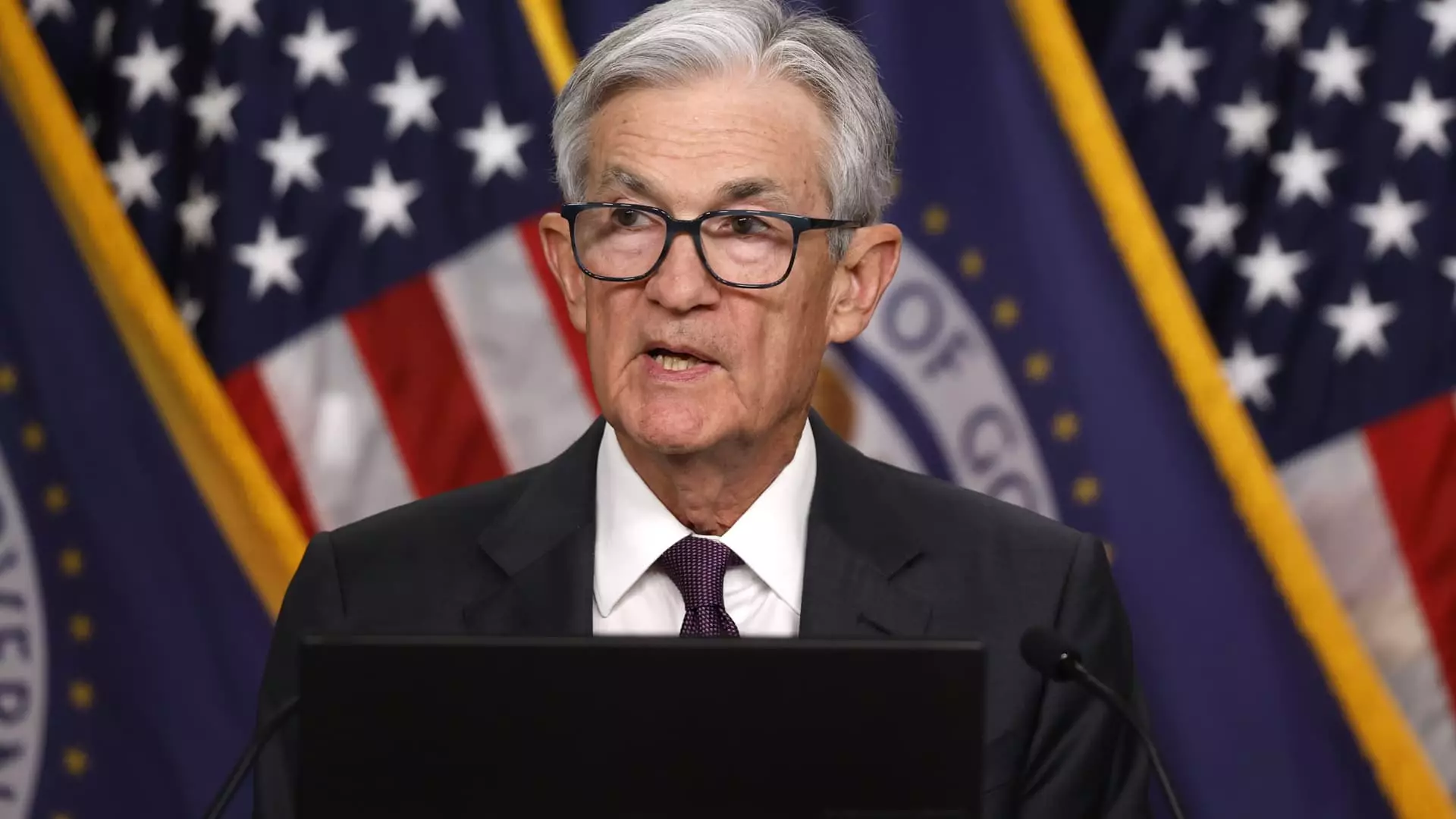In a time when economic winds should be steady, the Federal Reserve’s decision to maintain its key interest rate between 4.25% and 4.5% has unveiled a quagmire of indecision and risk aversion. Waiting for the Trump administration’s trade policy to unfold, the Fed’s inaction seems less like prudence and more like a reaction born from mounting uncertainty. It’s as if the Fed, buoyed by an overly optimistic view of economic resilience, is ignoring the harbingers of doom lurking around the corner.
Chairman Jerome Powell’s acknowledgment of the increasing risks—specifically the potential for higher unemployment and inflation—reveals a disquieting truth: the Fed is staring into an abyss devoid of clear economic direction. Focusing solely on short-term gains is myopic when the specter of stagflation, a combination of stagnation and inflation, looms ominously. This scenario has been absent from the American landscape since the early 1980s, making it an unlikely but plausible eventuality if the Fed remains paralyzed by indecision.
Tariff Turbulence: A Looming Threat to Growth
The ongoing trade tussle ignited by President Trump’s tariff policy adds layers of complexity that further complicate the Fed’s mission. By imposing 10% tariffs on imports and hinting at further duties, Trump’s administration not only jeopardizes long-standing relationships with trading partners but also risks initiating a catastrophic cycle of economic unravelling. The Federal Open Market Committee’s (FOMC) latest statement indicates awareness of these dangers, but their reticence in articulating a decisive stance is a source of frustration.
Rather than exhibiting leadership, the Fed appears to be waiting for trade negotiations to resolve themselves while critical economic indicators flash cautionary signs. With Gross Domestic Product (GDP) contracting by 0.3% in the last quarter due to slow consumer spending and a spike in imports, it’s chilling to consider how much worse things could become if input costs balloon due to tariff-induced inflation. Wall Street’s moderate optimism may mask deeper systemic issues; after all, the “solid pace” of expansion the Fed touts is a mere illusion propped up by temporary gains.
The Fragile Dance of Employment and Inflation
While job growth has held steady, with nonfarm payrolls rising by 177,000 in April and an unemployment rate stabilizing at 4.2%, the undercurrents of uncertainty continue to pulse through the economy. The Fed’s dual mandate—to maintain full employment while controlling inflation—seems increasingly at odds with each other under the current circumstances. Persistently low inflation can be a double-edged sword; it might tantalize the Fed into a false sense of security. Yet, an upcoming wave of price hikes due to tariffs might throw that illusion into chaos.
Amidst this, it’s troubling to witness the Federal Reserve place such significant weight on the whims of the current administration. Trump’s pressure on the Fed to lower rates, justified by a slight easing of inflation to 2.3%, reflects a fundamental misunderstanding of monetary policy. The central bank’s independence is crucial; an overreliance on government dictates undermines the integrity of its mission.
Market Reactions and Future Implications
Despite Powell’s assertion that the Fed is proactive and doing its job, markets have responded with a mix of caution and skepticism. Stock prices initially fluctuated but later bounced back—a classic case of market optimism overshadowed by underlying fears. In an environment defined by unpredictable tariffs and trade negotiations, this sense of security is dangerously misplaced. The Fed’s decision not to cut rates this month was unanimous, yet how long can this fragile consensus hold amid swiftly changing economic realities?
Traders are beginning to price in the likelihood of three rate cuts within the year, yet this anticipatory behavior could easily backfire if incoming economic data paints a gloomier picture. The reality is that uncertainty has rippled through the economy, affecting consumer and business sentiment alike. High levels of anxiety persist as managers express concerns over supply chains and pricing fluctuations. This is not just a passing concern; it is indicative of deeper structural issues that demand immediate attention.
The fact is that America is standing at a crossroads, and the Federal Reserve must reclaim its role as an anchor in turbulent waters. As crises loom, it cannot afford to react passively to external pressures. While the political tides ebb and flow, the economic foundation requires a steady hand—one that fosters growth while managing inflation prudently. Waiting for clarity could lead to a prolonged period of instability and disillusionment for the American people, who deserve proactive leadership rather than complacent silence. The time for action is now, lest the Fed’s indecision transforms into an economic catastrophe.

